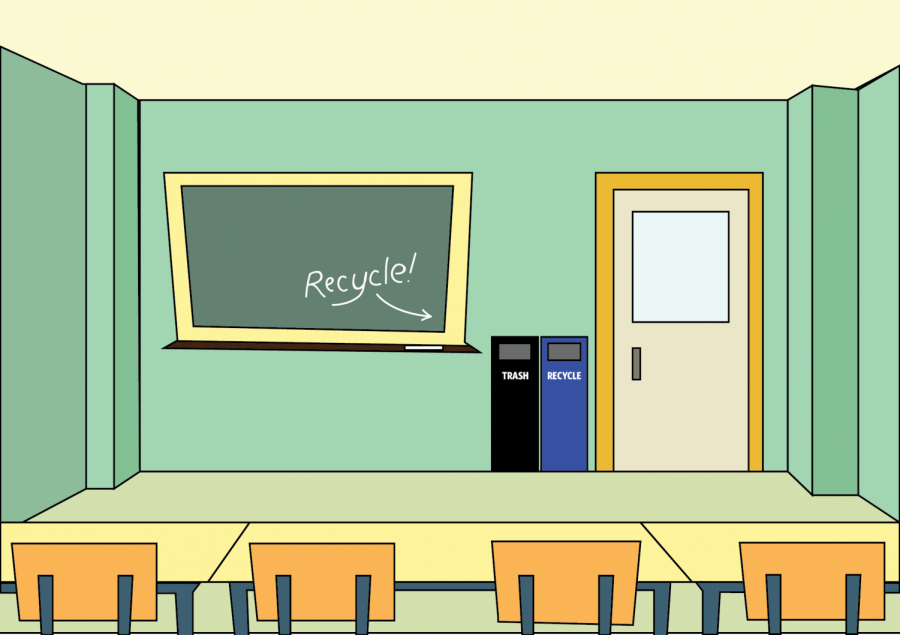We need more recycling bins on campus
Apr 22, 2019
The absence of recycling bins on campus has stuck out to me since I arrived at the University.
Adjusting to classrooms and public spaces that lack recycling bins has been an unexpected change I’ve had to make. The high number of recyclables I see tossed into classroom trash cans is disappointing but not surprising.
I would like to think in 2019, or even 2009, every classroom ought to be equipped with waste and recycling bins. At the very least, I would expect large paper and plastic recycling bins to be in every major hallway. The Main Quad shouldn’t be the only place where bins that separate waste types are conveniently accessible. Yes, a virtuous recycler can hunt down a recycle bin, but the onus should be on both parties: on the individual to recycle responsibly and on the institution to make that easy to do.
Expanding the availability of recycling bins doesn’t need to occur all at once; obviously, putting bins in strategic locations should be the first step. For example, the main level of the Undergraduate Library is a highly trafficked area with trash bins galore, but I could only find three plastic recycling bins after doing some searching.
A stroll through the library will quickly reveal the number of recyclables in the waste bins. The scant number of recycling bins that do exist are poorly placed, and their bags often obstruct the information sheets that state the kinds of recyclables the bin is for.
Get The Daily Illini in your inbox!
An eating area that lacks clearly marked recycling bins, such as the lower level of the Illini Union, is simply negligent. There ought to be recycle bins at the main entrance of any highly trafficked area.
I am not arguing that our school doesn’t care enough about recycling. Our recycling program is robust: The campus diverts 30% of its waste from landfills, recycles its fluorescent bulbs and batteries and emphasizes employees need to recycle by providing appropriate bins for office spaces. Our school is even striving toward an ambitious goal of diverting 45% of our waste from landfills by 2020.
But this goal is perhaps too ambitious given the current recycling levels: In 2008, 37% of waste was diverted from landfills and in 2018, that number was down to 27%.
Ambitious goals need to be accompanied by realistic strategies and insightful planning. Making bins easily and clearly accessible in locations where waste is likely to occur is a basic first step to actualizing this goal.
But behavioral change consists of more than having strong ideals; the administration needs to think about the student body’s needs and inclinations. It’s unlikely anyone would go out of their way to avoid recycling, but it is unreasonable to expect them to go out of their way to do so when convenience hasn’t been factored into the recycling program’s planning.
Perhaps the immediate costs of maintaining a convenient recycling program are too high — but the negative externalities of a lackluster program are too great for the problem to be neglected.
Figuring out ways to improve our practices is a benefit in itself. It keeps us critical and aware of our social environment — in other words, our culture. A well managed social environment results in a well-managed natural environment; a neglected social environment results in a neglected natural environment.
A mindfully managed college environment is a great example to set for the leaders, innovators and responsible citizens of the future.
Matt is a junior in Media.






